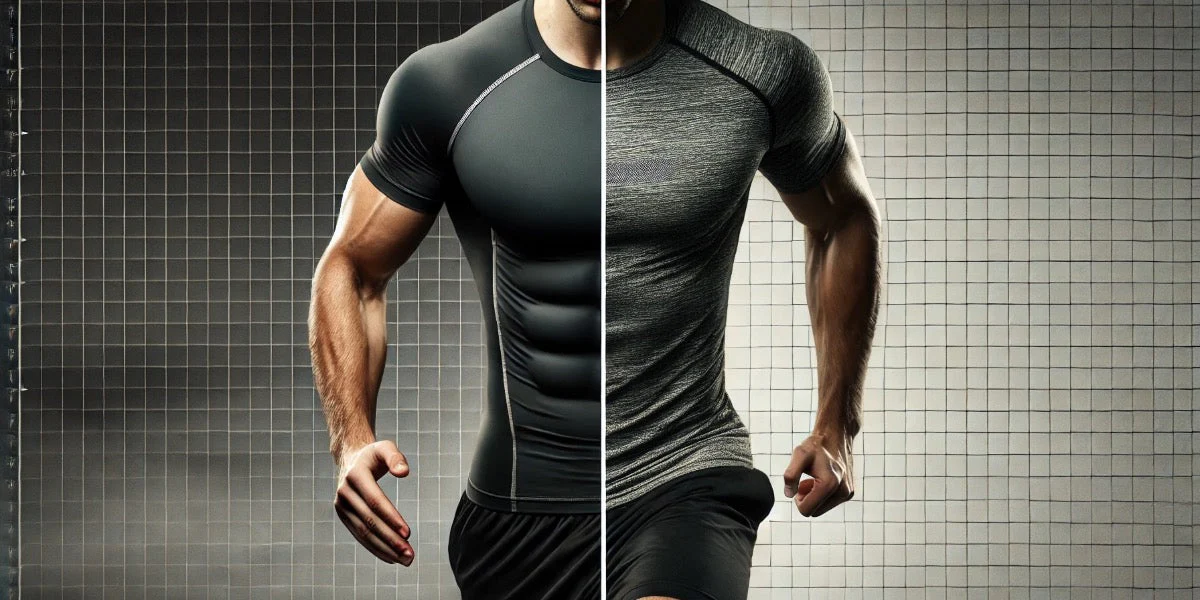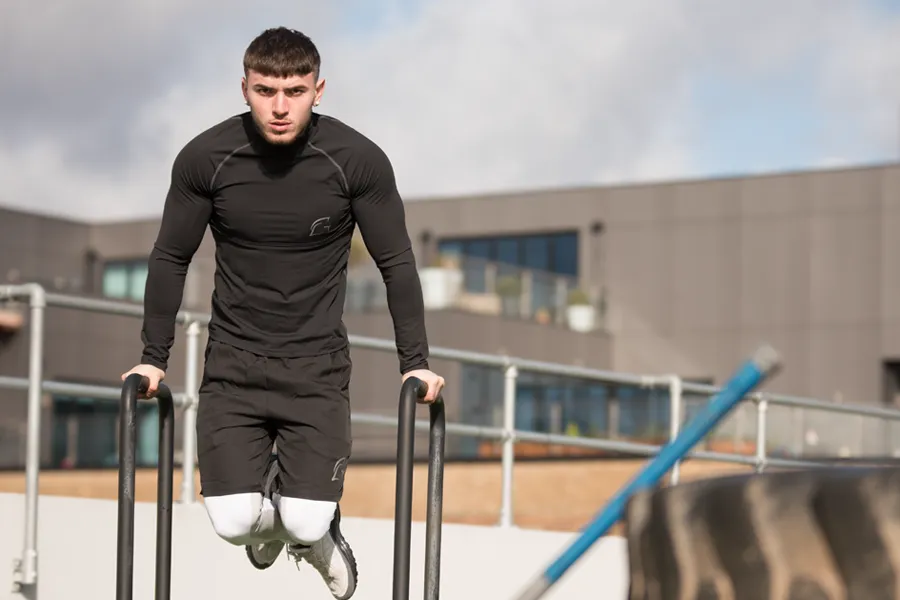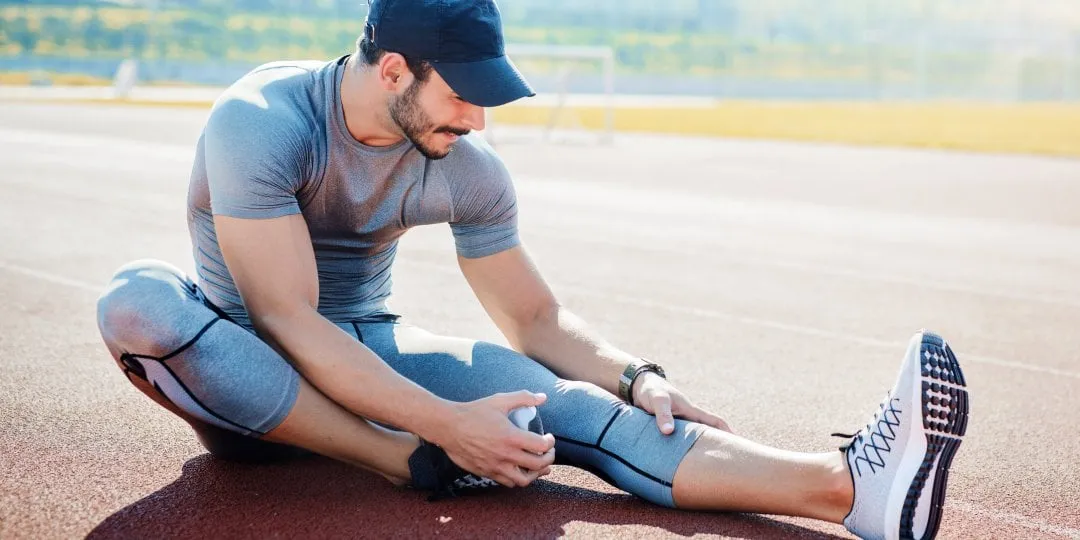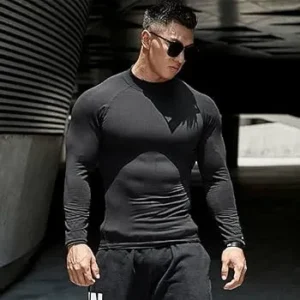Address
304 North Cardinal St.
Dorchester Center, MA 02124
Work Hours
Monday to Friday: 7AM - 7PM
Weekend: 10AM - 5PM


Compression clothing is specifically designed apparel that exerts a certain degree of pressure on the body, helping to enhance overall athletic performance and recovery. This category of gym clothes is engineered with form-fitting fabrics, often made from a blend of spandex, nylon, and polyester. These materials provide a snug fit that supports the muscles while allowing full freedom of movement. The tightness of compression garments can vary, catering to different preferences and training needs.
Among the most common types of compression clothing are compression shirts and shorts. Compression shirts, typically made to fit closely around the upper body, provide support to the shoulders and arms during intense activities. They are commonly worn by athletes during training and competition to optimize muscle positioning and enhance blood circulation. Similarly, compression shorts, which fit tightly around the thighs and hips, are designed to sustain the lower body during workouts, reducing muscle fatigue and risk of injury.
The purpose of these training clothes is to help regulate body temperature, wick away moisture, and expedite recovery processes after intense exercises. This is crucial for maintaining optimal athletic performance, as it can help athletes stay focused and comfortable during workouts. Compression clothing may also promote muscle alignment, reducing the overall impact of physical stress on the body. Ideally suited for various sports, these garments have gained popularity among individuals looking to elevate their fitness experience. Whether worn during rigorous training sessions or casual workouts, compression apparel serves as an effective aid in the arsenal of modern fitness enthusiasts, establishing its importance in the realm of physical activity.

Compression clothing, such as compression shirts and other types of gym clothes, has gained recognition in the athletic community for its potential to enhance performance and facilitate recovery. One of the primary benefits of wearing these specialized training clothes is the improvement in blood circulation. Compression garments are designed to apply pressure to the muscles, which helps to promote greater blood flow. This increased circulation ensures that more oxygen is delivered to the working muscles, allowing athletes to perform at higher intensities for longer periods.
Furthermore, the use of compression shirts can significantly reduce muscle vibration during physical activities. This vibration can lead to muscle fatigue and discomfort, which ultimately affects performance. By minimizing this oscillation through the snug fit of the garment, athletes may experience improved stability and a reduction in the risk of injury. This aspect is particularly beneficial during high-impact workouts or strenuous training sessions where muscle control is crucial.
In addition to enhancing performance during workouts, compression clothing plays a vital role in the recovery process. Post-exercise, the application of compression can aid muscle recovery by alleviating soreness and reducing the time it takes for muscles to repair. Studies have shown that athletes who wear compression garments after intense training report less muscle soreness, allowing them to return to their training regimen more quickly. This accelerated recovery leads to improved overall training outcomes, enabling athletes to maintain consistency in their workout routines.
In conclusion, the incorporation of compression shirts and other training clothes into workout apparel can lead to significant improvements in both performance and recovery. By enhancing blood circulation and minimizing muscle vibration, athletes can optimize their workouts and expedite the recovery process, ultimately supporting their fitness goals.
Compression clothing, including compression shirts and shorts, has become increasingly popular for individuals engaging in various physical activities, particularly in the realm of gym clothes and training clothes. One of the primary benefits of wearing such apparel is its potential to prevent injuries. The snug fit of compression garments offers considerable support to muscles and joints, which is essential during high-intensity workouts. By maintaining a stable environment for the muscles, these garments help to reduce the risk of common injuries such as strains and pulls.
During exercise, especially in activities that involve rapid movements or heavy lifting, the risk of injury increases significantly. Wearing compression wear aids in stabilizing the muscles, which counteracts the natural tendency for muscles to oscillate during intense physical exertion. This stabilization minimizes the strain placed on ligaments and tendons, effectively lowering the likelihood of developing acute or chronic injuries. Moreover, the increased blood flow facilitated by these garments promotes oxygen delivery to the muscles, further enhancing their performance and resilience under stress.
Additionally, compression clothing can assist in improving posture during workouts, another vital component of injury prevention. Proper posture is critical when performing various exercises, as poor form can lead to overexertion and consequently injuries. By providing a supportive layer that maintains alignment, compression shirts and garments help wearers maintain proper biomechanics, ensuring that movements are executed efficiently. This not only enhances performance but also protects against the wear and tear that can occur over time.
The benefits of compression clothing extend beyond mere performance enhancement; they play a crucial role in injury prevention and support during workouts. As individuals choose their training clothes, incorporating compression wear can be an important consideration for those commited to workout safety and effectiveness.
Compression shirts and other training clothes are not only designed for functional performance but also provide notable aesthetic and comfort benefits. One of the significant psychological advantages of wearing these garments is the confidence boost that comes from their flattering fit. Compression clothing, by design, hugs the body, enhancing muscle definition while providing support. This appealing silhouette often fosters a positive self-image, encouraging individuals to engage more actively in their workouts.

The comfort of compression shirt and training clothes is further enhanced by advanced moisture-wicking technologies. These innovative fabrics are engineered to draw sweat away from the skin, helping to regulate body temperature and minimizing discomfort during intense exercise. This feature becomes especially beneficial in high-energy workouts, where perspiration can detract from performance and enjoyment. Furthermore, the breathability of quality gym clothes promotes ventilation, allowing for a cool and comfortable experience regardless of the workout’s intensity.
Choosing the right compression clothing is vital for maximizing both aesthetic appeal and comfort. When selecting gym clothes, consider personal preferences such as fit, fabric type, and style. For instance, some may prefer tighter or more supportive fits for high-impact activities, while others might opt for looser styles for more comfort-oriented workouts. Additionally, exploring different designs and colors can enhance motivation and personal expression, which are key factors in consistently maintaining an active lifestyle. Overall, embracing compression clothing not only elevates one’s training regimen but also contributes to an enjoyable and confident workout experience.
